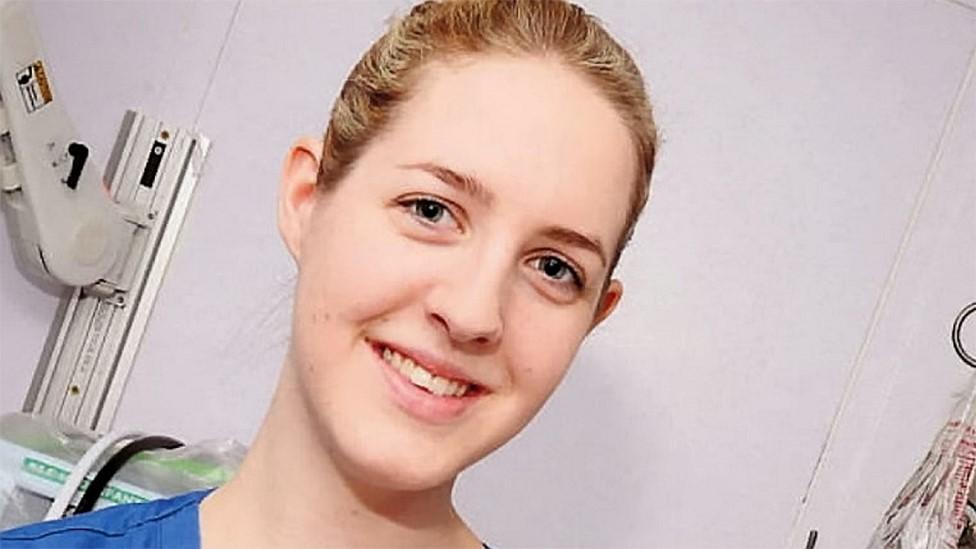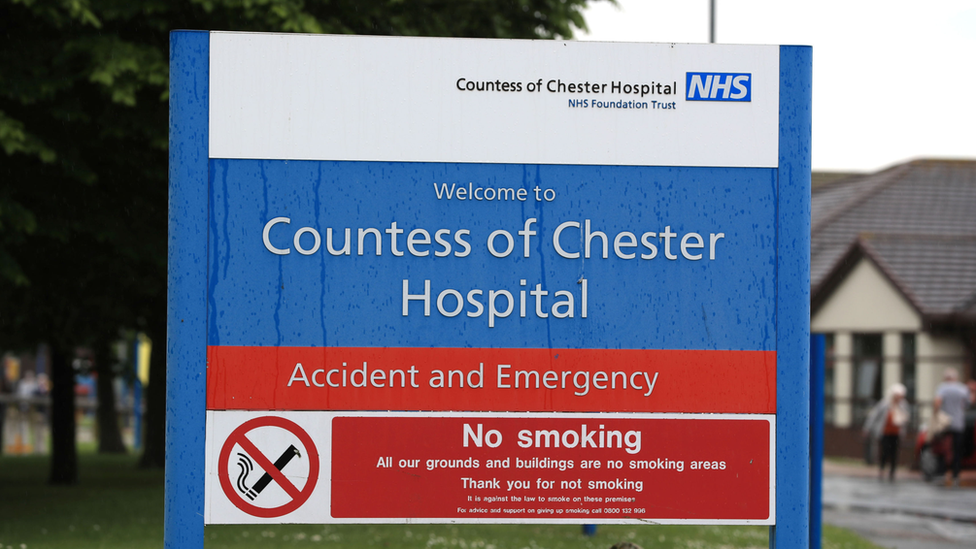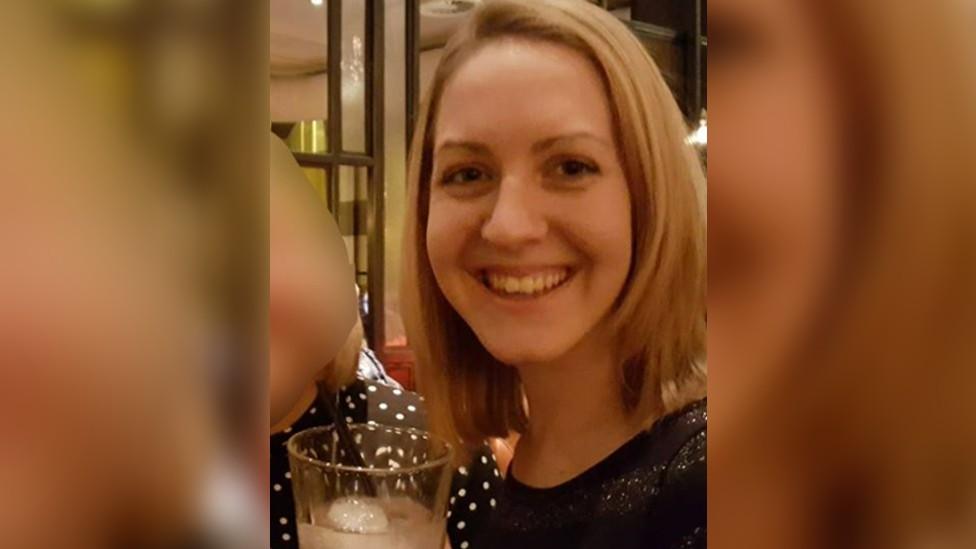Lucy Letby: Disturbing pattern in baby deaths, nurse's trial told
- Published

Lucy Letby is accused of murdering seven babies and trying to kill 10 others
A medical expert has told the trial of nurse Lucy Letby how he noticed a "quite disturbing and quite unusual" pattern in the deaths of babies she is accused of murdering.
Ms Letby is charged with killing seven babies and attempting to murder 10 others at the Countess of Chester Hospital in 2015 and 2016.
Ms Letby, 32, denies 22 charges.
Expert Dr Dewi Evans was approached by the National Crime Agency to review the case in 2017.
Giving evidence at Manchester Crown Court, Dr Evans said: "The concern was that there had been a number of deaths in the Countess of Chester that had been unusual.
"There were far more deaths than they would expect. There was collapses in babies that were otherwise quite stable, but in many of the cases resuscitation was not successful."
Dr Evans said "a pattern became apparent", which he described as "quite disturbing and quite unusual".
It is alleged Ms Letby injected air into the bloodstream of a baby referred to in court as Child A, shortly after she came on shift in June 2015, just over 24 hours after his premature birth.
The prosecution alleges she used the same method to attack his sister, Child B, on the following night shift.
Dr Evans told the court that a review of Child A's records showed that the baby boy was in a "stable condition" before his collapse.
He said: "He was as well as could be expected, all the markers of wellbeing were very satisfactory.
"He was doing really, really well and everyone on the unit would have been really pleased with the way he was."

The nurse worked on the neonatal ward at Countess of Chester Hospital
Dr Evans said the circumstances of Child A's collapse led him to the conclusion that "air had somehow got into his circulation".
He ruled out other conditions such as sepsis, a lack of fluids or hypoxia as causes, or contributing factors to the collapse.
He said he had "only one" conclusion, that Child A had received an air embolism through an intravenous line.
He said with the systems in place, and the medical equipment and staff being "obsessive" about making sure patients were not injected with air, "there was no way this could have been done by accident".
Jurors earlier heard from a doctor, who cannot be named for legal reasons, who was on shift the night Child B fell ill.
Reading her notes from that night, the doctor told the court: "Baby suddenly stopped breathing. Purple blotching of body all over with slowing of heart rate."
Subsequent blood observations taken were "good" and no more tests were ordered, but the doctor remained "puzzled" over the purple rash.
She said: "It was so florid, it came out of nowhere. One-and-a-half hours later it was completely gone."

Lucy Letby denies 22 charges
Lucy Letby's defence barrister Ben Myers KC asked Dr Evans about his "state of mind" when approaching the case and whether interactions with the National Crime Agency had swayed his analysis.
Dr Evans said he was tasked with investigating a "clinical condition" not a "crime" when he became aware of the case.
He said: "My state of mind was very clear - let's find a diagnosis. Nothing to do with crime. Let's identify any specific collapse and see if I can explain it.
"There were occasions where I couldn't explain it, and occasions where I found something deeply suspicious.
"There were incidents I found disturbing."
He said he was asked to investigate 33 cases in total.
He added: "The name Lucy Letby meant nothing to me. I didn't know the staff.
"I was a blank sheet of paper. I had no idea and relied entirely on the evidence I could see from the clinical notes and applying my clinical experience and forming an opinion to the cause."
'Teaspoon of air'
Fellow expert Dr Sandie Bohin said it was "extremely unlikely" that air was administered accidentally.
She said: "My experience is that nursing staff who either put in a line or care for the line are absolutely meticulous in preventing any air getting into those lines.
"The lines and the connecting points are filled with saline so even the tiniest of air bubbles could not get in. It is ingrained in nursing staff."
She said the amount of air likely to be fatal in an infant such as Child A, who weighed just 3lb 5oz (1.6kg) at birth, was a "teaspoon of air".
Child A's mother wept in the public gallery as Dr Bohin said she was left with only one "plausible explanation" for her son's collapse and death, which was an air embolism.
The trial continues.

Why not follow BBC North West on Facebook, external, Twitter, external and Instagram, external? You can also send story ideas to northwest.newsonline@bbc.co.uk, external
Related topics
- Published24 October 2022

- Published21 October 2022

- Published20 October 2022

- Published19 October 2022

- Published18 October 2022

- Published17 October 2022
